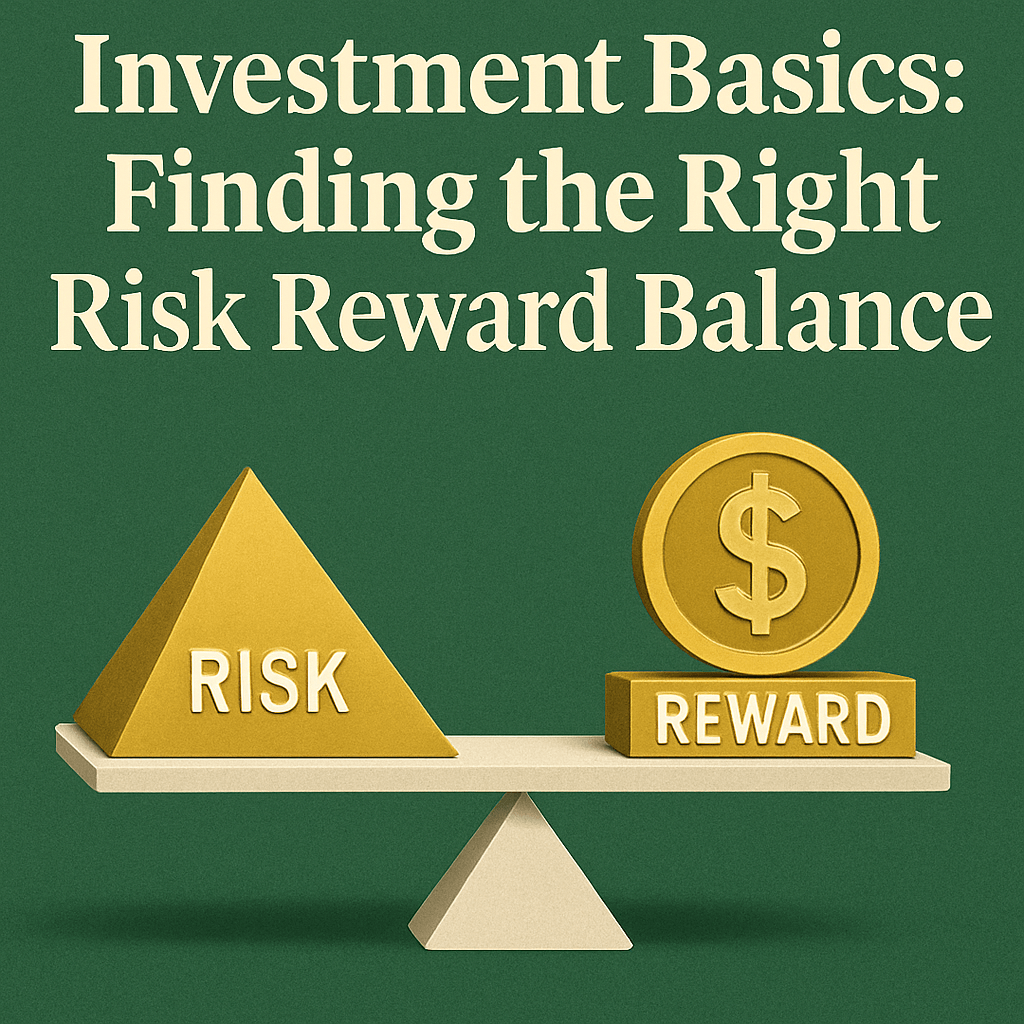Investment Basics: Finding the Right Risk-Reward Balance

Why We Invest: Preserving and Growing Purchasing Power
When you leave money in cash or a basic savings account, you earn nominal interest—but inflation steadily erodes your buying power. For example, with UK inflation near 4% and typical savings rates around 1%, your real return is –3%. Central banks target 2% inflation, measured by the Consumer Price Index (CPI), but recent data show higher rates across major economies. That gap makes simply matching inflation insufficient for building wealth.
Limitations of Cash Savings
Cash is often viewed as “risk-free,” but it carries:
- Inflation risk: Negative real rates if nominal interest < inflation.
- Credit risk: Bank failures—FDIC (US) or FSCS (UK) insure up to certain thresholds (e.g., $250,000 in the US).
- Opportunity cost: Foregone returns from higher-yielding assets.
To generate £20,000/year at a 4% real yield, you need £500,000. If you’re 40 with £100,000 saved, you’d need to set aside ~£10,000 annually (in today’s terms) over 25 years to hit that target—before factoring inflation’s further erosion.
Alternative Asset Classes: Bonds, Equities, Property, Commodities
Seeking higher returns means assuming additional risks. Common asset classes include:
- Government bonds: Low credit risk; exposed to duration/interest-rate risk. Ten-year US Treasuries yield ~4.2%; their prices fall if rates rise.
- Corporate bonds: Credit spreads compensate for default risk. Investment-grade spreads hover around 80bps; high-yield spreads ~400bps.
- Equities (shares): Higher long-term returns (6–8% real) but greater volatility. The equity risk premium over government bonds averages ~4% historically.
- Real estate: Rental yields, capital appreciation; illiquid and subject to local market cycles. Typical cap rates are 4–6% in major cities.
- Commodities (e.g., gold): Inflation hedge, zero yield, high volatility (standard deviation ~15–20%).
Risk and Return 101
Every investment involves a trade-off between expected return and risk, which in finance is often quantified by volatility (standard deviation of returns) and value at risk (VaR). Key concepts include:
- Volatility (σ): Measures dispersion of returns around the mean. Higher σ means larger swings.
- Drawdown: Peak-to-trough decline, important for stress scenarios.
- Sharpe ratio: (Rp – Rf) / σp, where Rp is portfolio return and Rf is risk-free rate. A higher ratio indicates better risk-adjusted performance.
- Correlation (ρ): Degree to which asset returns move together. Diversification relies on low or negative ρ to reduce overall portfolio volatility.
Illustrative Risk Profiles
Imagine three hypothetical return paths over 15 years:
- Stable Growth (Graph A): Smooth, 4% annual real return—always above start. Low volatility, final value 150.
- Moderate Volatility (Graph B): Returns fluctuate ±15% annually, final value 150. Higher σ, same endpoint.
- High Volatility (Graph C): Swings ±25%, occasional drawdowns >50%, final value 200—10% chance of total loss.
Rational investors prefer path A over B if they both yield 150, avoiding unnecessary risk. Path C may justify its risk if you can tolerate the volatility and extreme capital-loss probability.
Diversification and Correlation
Diversification reduces portfolio variance via combining assets with low correlation. According to Modern Portfolio Theory (Markowitz, 1952), portfolio variance σp² = wᵀΣw, where w is the weight vector and Σ the covariance matrix. By optimizing weights, you can reach an efficient frontier offering the highest return for a given σ.
Risk-Adjusted Performance Metrics
Beyond raw returns, investors evaluate:
- Sharpe ratio: Excess return per unit of total risk.
- Sortino ratio: Similar to Sharpe but penalizes only downside volatility.
- Alpha & Beta (CAPM): Beta measures sensitivity to market moves; alpha is manager skill beyond market exposure.
- Value at Risk (VaR): Maximum expected loss over a period at a given confidence level (e.g., 5% one-month VaR).
Behavioral Considerations in Risk Management
Behavioral finance highlights biases that can undermine returns:
- Loss aversion: Investors feel losses ~2.5× more intensely than gains (Kahneman & Tversky, 1979).
- Herding: Chasing returns during rallies, then panicking in sell-offs.
- Overconfidence: Overestimating forecasting ability, leading to excessive trading and higher fees.
Key Takeaways
- All assets have distinct risk-return profiles—higher expected returns require accepting higher volatility and potential capital loss.
- Cash is safest, but negative real yields erode purchasing power over time.
- Modern Portfolio Theory and risk-adjusted metrics (Sharpe, Sortino, VaR) help evaluate trade-offs scientifically.
- Diversification across low-correlation assets can smooth returns and reduce risk.
- Behavioral biases can increase effective risk; disciplined, long-term strategies tend to outperform timing tactics.
Further Reading
This article is part of our Investing for Beginners series exploring fundamentals, asset allocation, and portfolio construction. Subscribe to stay informed.
Tip: If a strategy claims outsized returns with no visible risks, dig deeper—there’s always a trade-off.